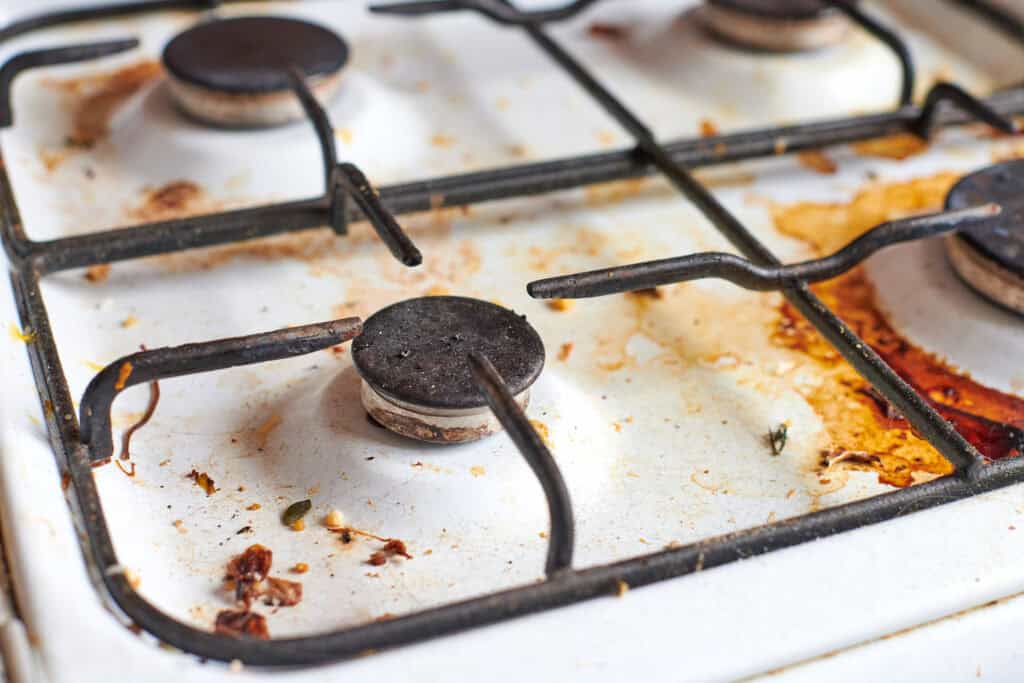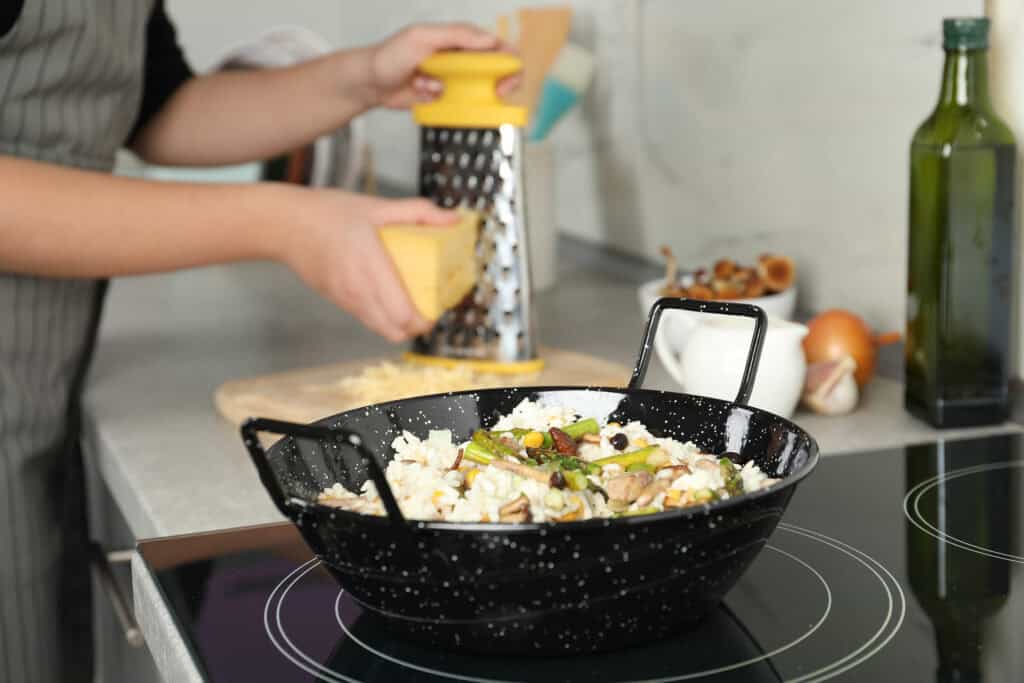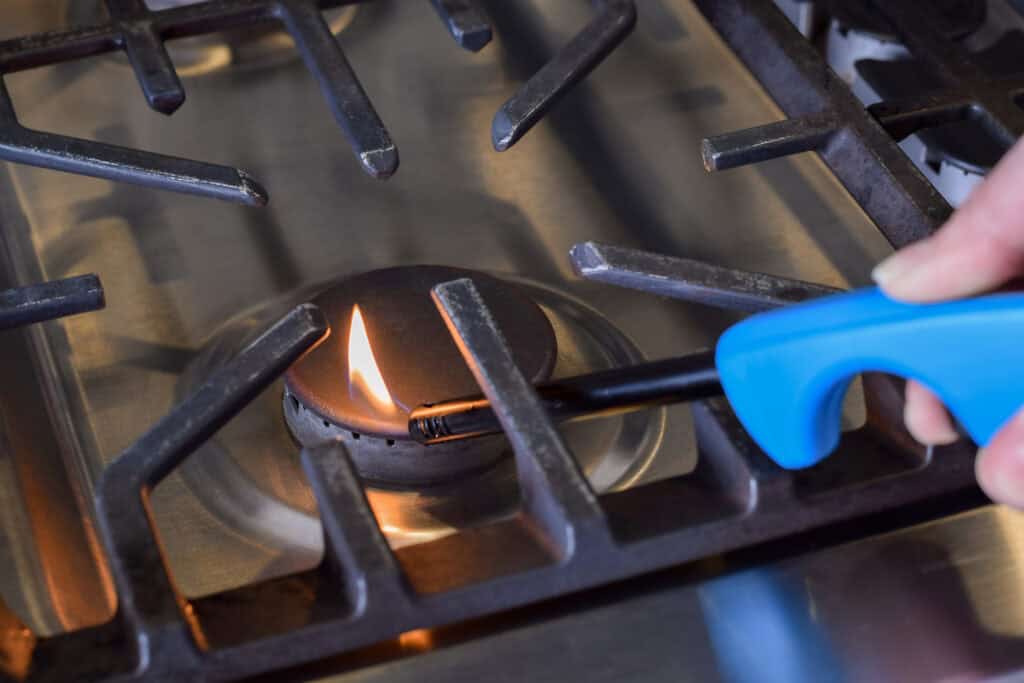When house hunting, kitchen amenities often top the list of considerations. A lot of homebuyers want that beautiful gas stove and pass on otherwise perfect-for-them homes that lack gas hookups. Many times those homebuyers are unaware of or haven’t considered induction cooktops. Going the induction route offers a compelling array of benefits that not only rival but can exceed those of traditional gas stoves. Read on to learn about how induction cooking technology can transform your kitchen experience and keep you from missing out on a great home over a stove.
Understanding induction cooktops

Induction cooktops have remarkable technology. Each induction burner is a coil of copper wire. When the cooktop is turned on, electromagnetic current flows through this coil, generating a magnetic field. This induces an electric current in the base of the cookware placed on it. The cookware is what heats up—not the stove itself. And this allows the cooking process to be incredibly efficient.
The induction method ensures that heat is directly transferred to the cookware and its contents with minimal loss. This makes induction cooking exceptionally speedy and energy efficient, as the cookware heats quickly and with more evenly distributed heat. The cooktop itself does get hot, but not as hot as a gas or traditional electric stove, which enhances safety.
How induction cooktops outperform gas stoves
Induction cooktops provide many benefits that gas stoves can’t deliver. From more precision to being easier to clean, induction cooktops are transforming modern kitchens into efficient, safe, and stylish culinary spaces.
Precision cooking with induction
For example, induction cooktops adjust the cooking temperature almost instantaneously. With gas stoves, heat adjustment is less immediate since it takes time for the flame to change size and for the cookware to respond to the new heat level. Induction cooktops also have more precise and repeatable settings, which create consistent cooking temperatures.

Energy efficiency
Heat is also evenly distributed with induction, whereas the gas stove flame might not cover the base of your cookware – causing hot spots and uneven cooking. And since induction stoves heat the cookware directly rather than heating the air around it, there is less heat loss. This makes induction more energy efficient than gas stoves.
Easier to clean
And don’t underestimate the value of an easy clean when it comes to induction cooktops. Gas stoves are notoriously difficult to clean, especially around the burners and grates where spills, grease, and food particles tend to accumulate and harden over time. Induction cooktops are sleek and flat, making them easier to maintain. The smooth surface can be wiped down quickly, without the need to remove and scrub burners and grates. This simplicity helps prevent the buildup of grime and makes the cleaning process a breeze.

Safety
Induction cooktops can offer a layer of safety that gas stoves and traditional electric stoves cannot. Touching a gas or electric stove immediately after cooking can result in a contact burn. While usually mild, these burns can sometimes be more severe second-degree burns—intense and painful. But with induction, there’s no open flame and the cookware itself is what gets heated. As a result, there’s less opportunity for burns. In fact, you can touch the surface of an induction cooktop immediately after cooking. It will be hot, but it is unlikely to cause a contact burn, and the surface will cool quickly.
Common concerns about induction cooking
Although it offers numerous advantages, making a switch to induction cooking is not without its challenges. From the need for compatible cookware to the initial costs and adjustments in cooking techniques, these concerns can influence your decision to move to this innovative tech.
Compatible cookware
You need to use compatible cookware that can react to the electromagnetic field generated by the cooktop. Materials like cast iron or many types of stainless steel will work. Some cookware will have a symbol on the bottom indicating induction cooktop compatibility. But the simplest test is to just hold a magnet to the bottom. If it sticks and the bottom of your cookware is flat, you can use it with your induction cooktop.
When you switch to induction, you may need to make an initial investment in new cookware if your existing items are not magnetic. However, many mainstream cookware brands offer induction-compatible products at various price points, making the transition more accessible. For those with non-induction-ready cookware that they would hate to part with—such as copper pots and pans—you can try an induction interface disk. They are placed under the non-induction cookware, allowing it to be used on an induction surface (although it likely will not function as well as induction-compatible cookware).
Lack of cookware variety
In the early days of induction cooking, users may have been frustrated with the lack of supply and variety of compatible cookware. But as induction stoves grow in popularity, more cookware manufacturers are expanding their lines of induction-ready products. This includes not only pots and pans but also specialty items like griddles, woks, and simmer pots. Home chefs can rest assured that they do not have to compromise on culinary creativity.
And you can expect even more compatible cookware options as induction cooking gets more prominence. Grand View Research, an India- and U.S.-based market research and consulting firm, reported that the global induction cooktop market was “expected to grow at a compound annual growth rate of 8.5% from 2021 to 2028.” Further, search for a term like “induction cooking chefs” on Google, and you’ll find article after article about amateur and professional chefs alike who have traded up their gas stoves for induction cooktops.

Induction cooking technique adjustments
Cooking on induction is different than cooking with gas, and some users initially face challenges in adapting their cooking techniques. The precise and rapid heating of induction can lead to faster cooking times—and burnt meals if you’re accustomed to the slower response of gas. But most people find they quickly adjust. With instant heat control, consistent temperature and other benefits, they soon find themselves induction cooking enthusiasts.
What happens if the power goes out?
One of the biggest benefits of a gas stove is that it doesn’t require electricity. And this is great for power outages—you can still cook your family’s meal even if you have to do it by candlelight. Induction cooktops do require electricity. So when it comes to blackouts, unless you keep an emergency generator on hand, you’re out of luck with induction. If you live in an area prone to power outages, induction cooking may not be for you.

How to make the transition easier
Transitioning to an induction cooktop can be a significant change, especially if you are used to turning a knob and making adjustments based on the height of a flame. To make your switch to induction easier, start by cooking familiar recipes—instead of trying something new. This way you can get a feel for adjusting cooking times and settings. As you get more comfortable, introduce more complex dishes or new recipes to the mix.
Also make sure you get to know the features of your induction cooktop. Like any appliance, some will be more feature-rich than others. Take the time to learn your induction stove and what it can do. You can also dive into numerous free resources online (YouTube is a great place to look for these) for induction cooking basics.
Last, be patient with yourself. Give yourself time to adapt and don’t hesitate to experiment with different heat settings and cookware.
An induction cooktop might be your answer when buying a home
If you’re navigating the housing market, don’t let the type of stove a home offers be a deal-breaker. An induction cooktop could be your perfect solution, giving you a high-performance, modern alternative that fits into any kitchen design. As you tour potential homes, remember that an induction cooktop not only meets but often exceeds the capabilities of traditional gas stoves. So as you weigh your options, consider induction cooking not just as a compromise, but as a significant upgrade that could be great for your home and lifestyle.
